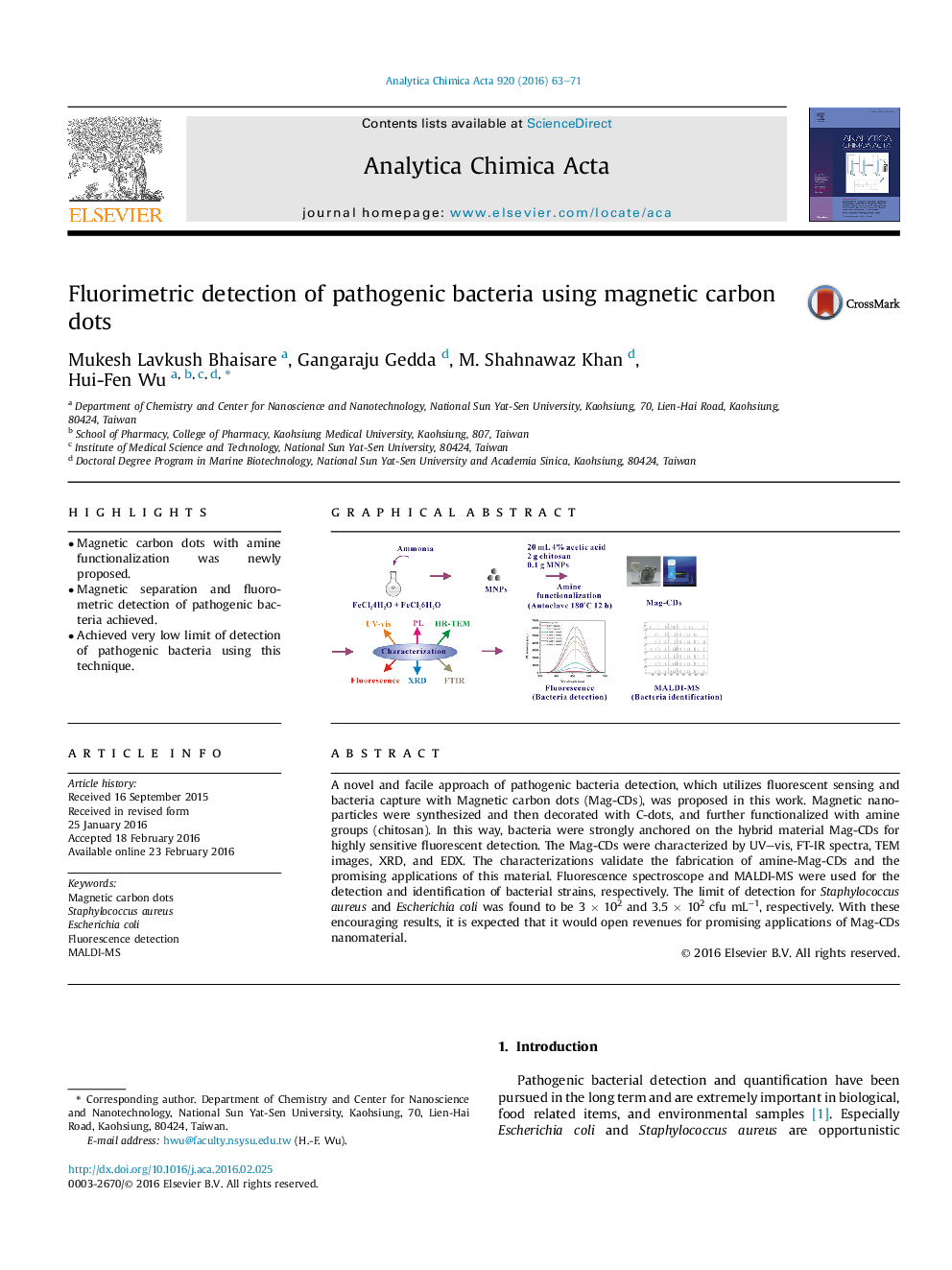| Article ID | Journal | Published Year | Pages | File Type |
|---|---|---|---|---|
| 1162823 | Analytica Chimica Acta | 2016 | 9 Pages |
•Magnetic carbon dots with amine functionalization was newly proposed.•Magnetic separation and fluorometric detection of pathogenic bacteria achieved.•Achieved very low limit of detection of pathogenic bacteria using this technique.
A novel and facile approach of pathogenic bacteria detection, which utilizes fluorescent sensing and bacteria capture with Magnetic carbon dots (Mag-CDs), was proposed in this work. Magnetic nanoparticles were synthesized and then decorated with C-dots, and further functionalized with amine groups (chitosan). In this way, bacteria were strongly anchored on the hybrid material Mag-CDs for highly sensitive fluorescent detection. The Mag-CDs were characterized by UV–vis, FT-IR spectra, TEM images, XRD, and EDX. The characterizations validate the fabrication of amine-Mag-CDs and the promising applications of this material. Fluorescence spectroscope and MALDI-MS were used for the detection and identification of bacterial strains, respectively. The limit of detection for Staphylococcus aureus and Escherichia coli was found to be 3 × 102 and 3.5 × 102 cfu mL−1, respectively. With these encouraging results, it is expected that it would open revenues for promising applications of Mag-CDs nanomaterial.
Graphical abstractFigure optionsDownload full-size imageDownload as PowerPoint slide
